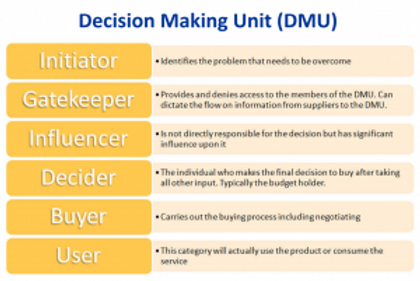Who's actually in control of the purchase?
31 Aug 2018

It’s all good a customer booking a holiday, but the real value comes from them booking a second, third and so forth. Retained customers are worth 5x more than obtaining new customers. To get them to this stage we need to understand the drivers and factors affecting their purchase decision. When considering a high-value purchase there are several roles that affect the decision. This is where the Decision Making Unit (DMU) comes into play.
Depending on the industry operated in, there are different levels of complexity within the DMU. An organisation operating in the B2C environment will have a simpler DMU that needs to be manipulated than a B2B organisation. There are six key roles that are prominent across DMU’s which can be seen below:

For example, for a family looking to go on holiday, friends may be the initiators but the kids will have a heavy influence on the deciders, the parents. So what weighting do we apply to target each role? Do we focus on the kids and hope their pushing power is enough to influence the deciders enough to make a purchase? Or do we only focus on the decider as they hold the purse strings? These considerations are all used when creating a roadmap for your consumers, where do they start, where do they go along the way and where do they finish.
So how do we use this properly? The answer is there is no magic formula, but there are several different strategies we can employ. For example, drip feeding content, targeting relevant material towards the influencers to develop a level of excitement then tailored material to the decider, highlighting the price of the holiday and such. Understanding this framework offers established roles where individuals can be placed, and different journeys mapped out, all with the target of converting them into a customer. Once the journeys for the roles are mapped out, they can be utilised across business offerings with there only being the need for tweaked content.
There are key points to consider before implementing this model within marketing strategy, like what weighting do you apply to each role? How important are the influencers and what characteristics do the buyers hold? Once these initial plans are put in place then targeted campaigns can be created and implemented, and you’ll find that this personalisation will reap almost immediate rewards.
If you would like to discuss this further feel free to drop me an email at joel.rowbottom@hivemarketingcloud.com or find me on LinkedIn!
-14.jpg)
Please login to comment.
Comments